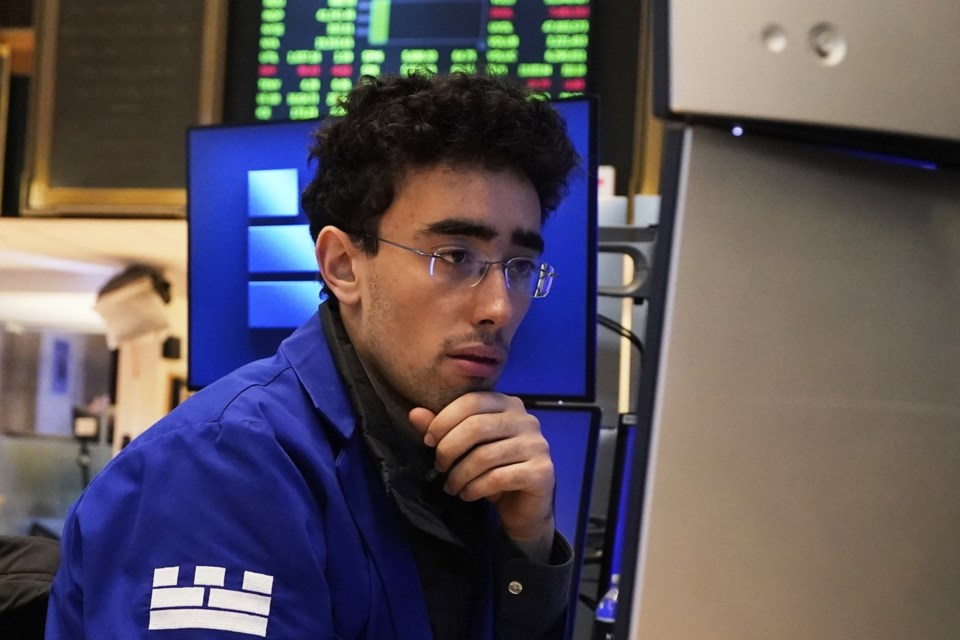It felt much longer, but the U.S. stock market needed just a few weeks to roar all the way back to where it was on President Donald Trump's “Liberation Day.” That's when by announcing than expected on nearly all U.S. trading partners.
Those tariffs unveiled on April 2 were so severe that they raised fears Trump did not worry about causing in his attempt to reshape the global economy. Within just four days, the S&P 500 , and the Dow Jones Industrial Average lost nearly 4,600 points, or about 11%.
This past Friday, though, the S&P 500 and pulled back to where it was on April 2.
Of course, the index at the heart of many 401(k) accounts is still more than 7% below its all-time high set earlier this year. And stocks could easily fall again as uncertainty remains high about what Trump's tariffs will ultimately do to the economy. But the run for U.S. stocks back upward has been just as wild and unexpected as its fall. Here's a look at what happened:
The pause
On April 9, Trump announced on social media a “90-day PAUSE” for most of the tariffs he’d announced a week earlier, except those against China. The S&P 500 soared 9.5% for one of its best days ever. Even that good news came with a bit of controversy, however: , Trump proclaimed on Truth Social that “this is a great time to buy."
De-escalation
The weeks after the pause were a roller coaster. Trump talked about negotiating tariffs with the trading partners while also using tariffs to force companies to move manufacturing to the U.S., two goals seemingly at odds with one another. The market did find relief in what the Treasury secretary referred to as de-escalation between the U.S. and China. Investors also welcomed Trump’s moves to ease as well as smartphones and other electronics.
Bonds and the buck
The severity of the U.S. stock market's fall after Liberation Day surprised some market watchers. They had assumed Trump would backtrack on policies that hurt the Dow Jones Industrial Average. This is a president, after all, who crowed repeatedly during his first term about how the Dow was doing.
But it was fear in other financial markets that may have forced Trump's hand. Tumbling prices for U.S. government bonds that the U.S. Treasury market was losing its status as the world's safest place to keep cash. The value of the U.S. in another signal of diminishing faith in the United States as a safe haven for investors.
Trump himself said he had noticed how bond investors were “getting a little queasy” before he paused his tariffs.
The economy
Economists and investors had to reconcile contradictory signals about the economy. Surveys of consumers showed declining confidence, largely due to the uncertainty created by the Trump trade policy. But what investors call “hard data,” such as employment numbers, indicated the economy was still doing OK. As of Friday, when the government said in April, the hard numbers appeared to have a advantage over the weak sentiment.
The Fed
The Federal Reserve cut rates three times at the end of 2024, but then implemented a pause of its own by keeping rates steady, in part to assess the impact of the Trump trade policy. The strong jobs report seemed to give the Fed clearance to keep rates where they are for now — despite Trump repeating his call for cuts — but the market is still looking for 3 cuts before the end of the year.
Plenty of profits
Through all the market's tumult, U.S. companies have continued to deliver profit reports for the start of the year that have topped analysts' expectations. Stock prices tend to follow profits over the long term, and that's given the market a notable boost.
Three out of every four companies in the S&P 500 have beaten analysts' expectations for profits in recent weeks, including such market heavyweights as . They're on track to deliver growth of nearly 13% from a year earlier, according to FactSet.
To be sure
Even as companies have delivered fatter profits than expected, whether it can last. CEOs have been either lowering or withdrawing their financial forecasts for the year given all the uncertainty around how Trump's tariffs will end up.
even made the unusual move of offering two separate forecasts for the year: one if there’s a recession, and one if not.
Trump’s off-again-on-again approach to tariffs had made this the most volatile period for the market since the onset of the pandemic. The pause is in its fourth week and the administration has yet to announce an agreement with any of U.S. trading partners. Based on his recent comments, Trump is still all-in on tariffs, so the pause could prove to be just that.
“We’ve already seen how financial markets will react if the administration moves forward with their initial tariff plan, so unless they take a different tack in July when the 90-day pause expires, we will see market action similar to the first week of April,” said Chris Zaccarelli, chief investment officer for Northlight Asset Management.
The Associated Press



